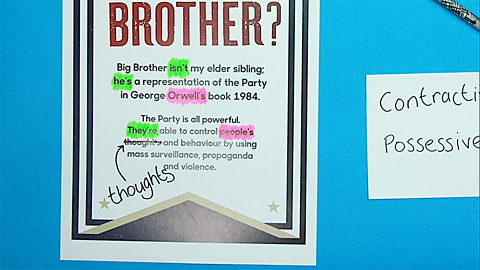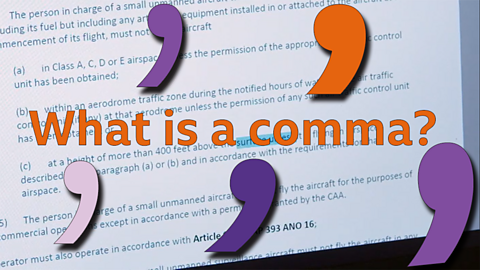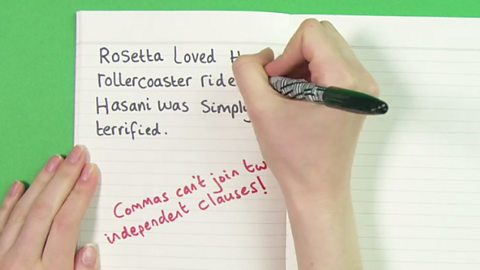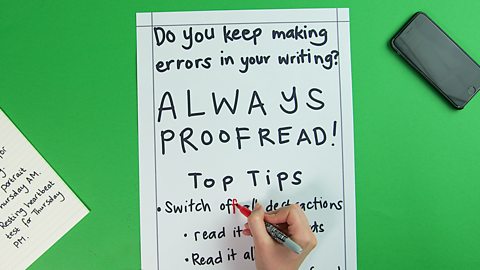Who said what?
Match the famous lines from these books with the character it belongs to:
- “The moment you doubt whether you can fly, you cease forever to be able to do it.”
- “Titchy little snapperwhippers like you should not be higgling around with an old sage and onions who is hundreds of years more than you.”
- “My armour is like tenfold shields, my teeth are swords, my claws spears, the shock of my tail is a thunderbolt, my wings a hurricane, and my breath death!”
- Peter Pan
- The BFG
- Smaug – The Hobbit
Introduction
In fiction writing, it is really important for readers to understand which character is saying what. In order to make this clear, writers use direct speech:
Direct speech is any word spoken by a character. It can be used to help develop the characters and plot
Direct speech should sit inside speech marks
Direct speech must be carefully structured and punctuated to clearly separate it from the rest of the text
Video about how to structure and punctuate direct speech
Learn how to correctly structure and punctuate direct speech when writing fiction
Speech marks
Punctuation is used in direct speech to separate spoken words, or dialogue, from the rest of a story. The words spoken by a character sit inside speech marks:
“Did you hear that noise?” whispered Sam.
Speech marks are sometimes known as inverted commas or quotation marks.
Some writers use double speech marks and some use single speech marks. You can use either type as long as you are consistent - it’s important not to swap between the two.
Remember to open - and close - the speech marks at the start - and end - of the direct speech:
“I think there is something moving in the bushes,” George said.
Write out these sentences with the speech marks in the correct place
- I can’t wait for my birthday party! exclaimed Matthew.
- What time does the film start? asked Amelia.
- To get to the art gallery, you need to take the next left and then turn right, the tour guide explained.
- “I can’t wait for my birthday party!” exclaimed Matthew.
- “What time does the film start?” asked Amelia.
- “To get to the art gallery, you need to take the next left and then turn right,” the tour guide explained.
New speaker, new line
Direct speech is carefully structured to help the reader follow the conversation. Every time there is a new speaker in the conversation, a new line is used.
Each new section of dialogue is like beginning a new paragraph, so in a printed novel you will see that each new line is also indented - this is when a line starts further in from the margin. Each new line of direct speech should also start with a capital letter:
“I think there is something moving in the bushes,” George said, looking carefully in the direction from which the sound came.
“I can’t see anything,” said Molly.
“Perhaps we should turn our torches on,” whispered George.
“Okay, but let’s be really quiet.”
A reporting clause after the direct speech tells the reader who is speaking. The last line above misses the reporting clause because the reader can see that the character Molly is replying to George. Once a conversation gets started, it’s fine to drop the reporting clauses.

Write out and organise this paragraph of dialogue correctly. Where do you think a new line must be started?
“Emily, can you hurry up please, we are all waiting for you!” exclaimed Hannah. “I’m just putting my shoes on, I will be there in a minute,” replied Emily. “What is taking so long? We will be late for the train, if we don’t leave now.” “Ok, ok, I am on my way!” “You really need to be more organised.”
“Emily, can you hurry up please, we are all waiting for you!” exclaimed Hannah.
“I’m just putting my shoes on, I will be there in a minute,” replied Emily.
“What is taking so long? We will be late for the train, if we don’t leave now.”
“Ok, ok, I am on my way!”
“You really need to be more organised.”
Punctuation inside speech marks
Each section of direct speech should end with a punctuation mark. If there is no reporting clause then this is likely to be a full stop, question mark or exclamation mark:
“Listen! I definitely heard something that time!”
Notice that these punctuation marks are included inside the speech marks. If there is a reporting clause, then there is often a comma before the final speech marks:
“I think we should go inside now,” said Molly.
There is usually a full stop after the reporting clause. This may come later if the sentence continues:
“I think we should go inside now,” said Molly as she moved towards the house.
Moving the reporting clause
Sometimes the reporting clause is added in the middle of the direct speech:
“I think we should go inside now,” said Molly. “I just saw the lights come on.”
"If we go inside," George said, "we'll have to meet them!"
In these examples, the punctuation still goes inside the speech marks of the first section.
A punctuation mark is then used after the reporting clause, before the next set of speech marks. If you've put the reporting clause in the middle of a sentence of speech then this should be a comma. If it's between two sentences of speech then it should be a full stop. You can see both examples above.
The second section of direct speech ends with the punctuation mark inside the speech marks.

Write these out with the reporting clause moved to different positions within the speech and add any necessary changes to punctuation.
- “I want to go on the rollercoaster first, actually on second thoughts, can we go on the log flume first?” decided Jamie.
- “It’s such a lovely, sunny day today! Let’s go to the park,” said Michael.
- "If you decide to go to the cinema, then call me." Sally said.
- “I want to go on the rollercoaster first,**” decided Jamie, “**actually on second thoughts, can we go on the log flume first?”
- “It’s such a lovely, sunny day today!” said Michael. “Let’s go to the park.”
The final comma in this sentence needs to be changed to a full stop. - "If you decide to go to the cinema,**" Sally said, "**then call me."
Examples in action
Click on the labels A-D to find out more about the direct speech in this extract.
Test your knowledge
Play Bitesize secondary games. gamePlay Bitesize secondary games
Have fun playing science, maths, history, geography and language games.

More on Punctuation
Find out more by working through a topic
- count8 of 11

- count9 of 11

- count10 of 11

- count11 of 11
